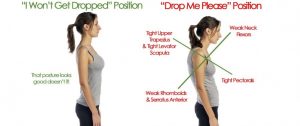Cyclists are always searching for ways to improve their  performance in the saddle and ideally to decrease risk of injury. They try the latest training techniques, equipment and nutritional plans in an attempt to gain an advantage. But many don’t realize they can also gain many benefits by incorporating Pilates to improve cycling performance.
performance in the saddle and ideally to decrease risk of injury. They try the latest training techniques, equipment and nutritional plans in an attempt to gain an advantage. But many don’t realize they can also gain many benefits by incorporating Pilates to improve cycling performance.
Although cycling gives you great cardiovascular fitness, your body can take a beating and this is particularly true if it develops bio-mechanical imbalances. Although cycling is classified as a low impact sport, it requires sustained forward flexion through the spine, and repetitive movement of the legs, which leaves a rider vulnerable to overuse injuries. Back and knee pain are the most common on the list of pain and injury.
Keeping your upper body still is considered good technique, however, this stillness is one reason why cycling takes its toll on the back. The extensor muscles are forced to remain engaged over extended periods, leading to fatigue which impacts both posture and power. Posture in a tired rider will start to slump. A decrease in power shortly follows, because cyclists need a strong back to stabilize the pelvis so the legs can generate maximum force.
Lack of flexibility is also an issue. Riders often present with tight pec muscles, rounded shoulders, overdeveloped quads, tight hip flexors, and tight hamstrings. These imbalances put strain on the joints and spine, and can lead to knee and back pain.

In addition to a well-fitting bike, having a strong core to stabilize your back and pelvis, and improving your flexibility, will improve your performance and your chance of injury and pain will decrease. Ideally, cyclists should incorporate Pilates into their training as a proactive way of preventing injury.
Pilates conditioning involves a series of dynamic movements designed to strengthen the body’s core. It also aims to improve flexibility of the spine and joints.
As the fitness industry has evolved, we have learned how important it is to effectively strengthen core musculature. If your center is strong and flexible, all types of movement are easier to perform. It’s clear that this concept applies well to improved performance in any type of sport or exercise, especially cycling.
Although cycling doesn’t use all of the body’s muscles, it does require overall strength, flexibility and balance. Pilates is a great complement to cycling because it works the body as a whole and fosters postural alignment throughout a variety of motions. On the bike, this translates to more efficient performance.
Think about the common postural faults of cyclists:
-Rounded shoulders
-Increased thoracic kyphosis
-Forward head posture
-Tight calves, hip flexors, hamstrings, ITB and low back muscles
-Less strength in the upper torso
-Core weakness
Pilates can help correct these faults because it promotes proper body mechanics and postural awareness. Pilates exercises focus on strengthening the deep core muscles, mobilizing the hips, chest opening, spinal mobility, hamstring flexibility, and strengthening the shoulders and upper back muscles. All of which are recommended and should be included in cyclists’ conditioning.
Benefits specifically related to cyclists include:
-Greater effectiveness of the pedal stroke
-Increased upper body strength
-Prevention of lower back pain
-Improved balance
-More efficient recovery of leg muscles
-Better endurance through focused breathing
-Correction of muscle imbalances
For competitive cyclists, incorporating Pilates into the transition and foundation training periods can pay off during race season. Because Pilates doesn’t build bulky muscles, it’s also a great discipline to practice year-round. Whether you’re a roadie, a mountain biker, or just into an occasional spin class, Pilates can enhance your performance and enjoyment on the bike, as well as other activities of daily living. At In Balance Physio & Pilates, we offer Pilates classes with individualized programs to reach specific goals. So whether you are looking to improve your posture and performance, or want to decrease the risk of injury, we can provide you with a Pilates program to help.
Article by Megan Dunphy
